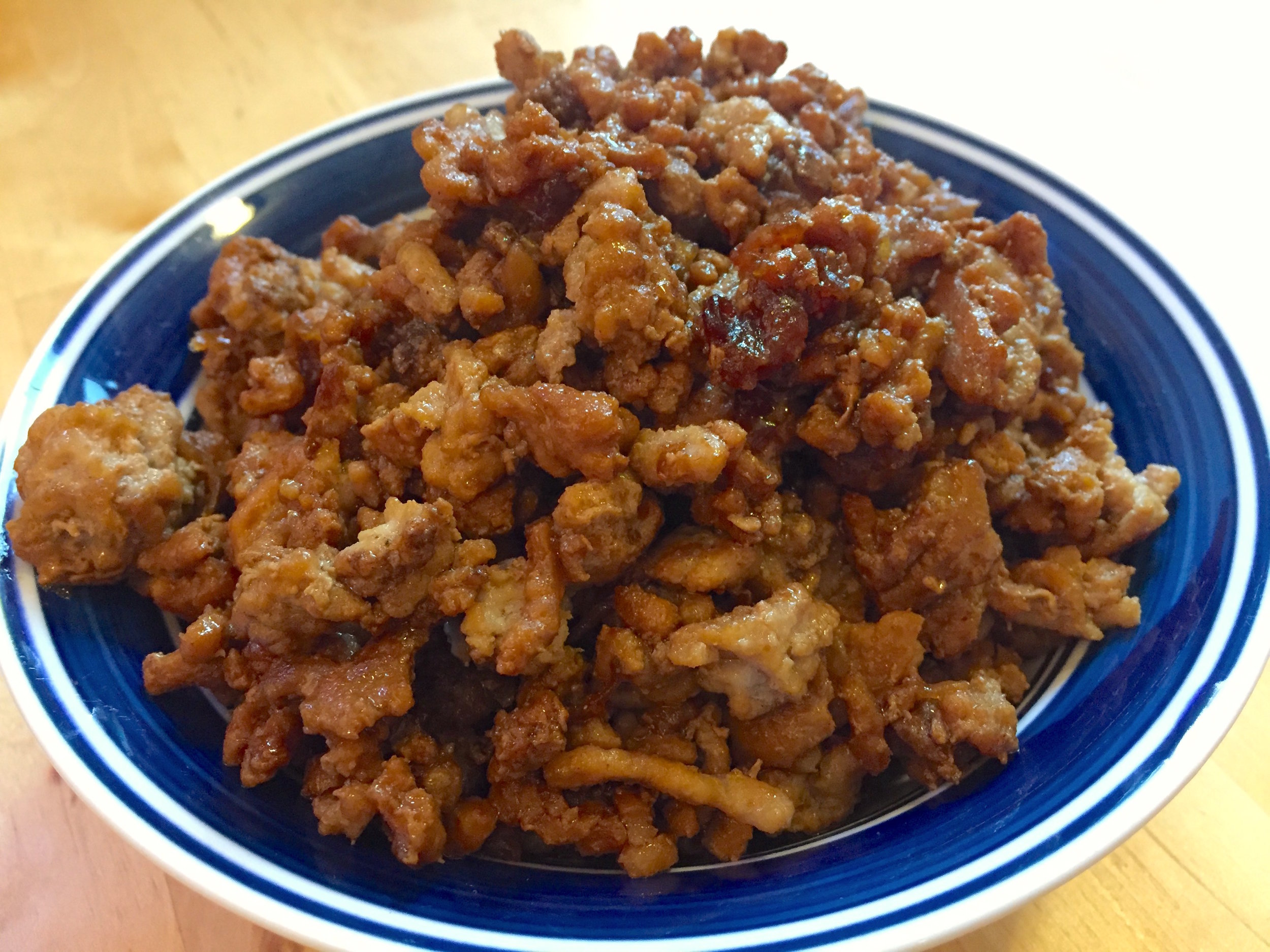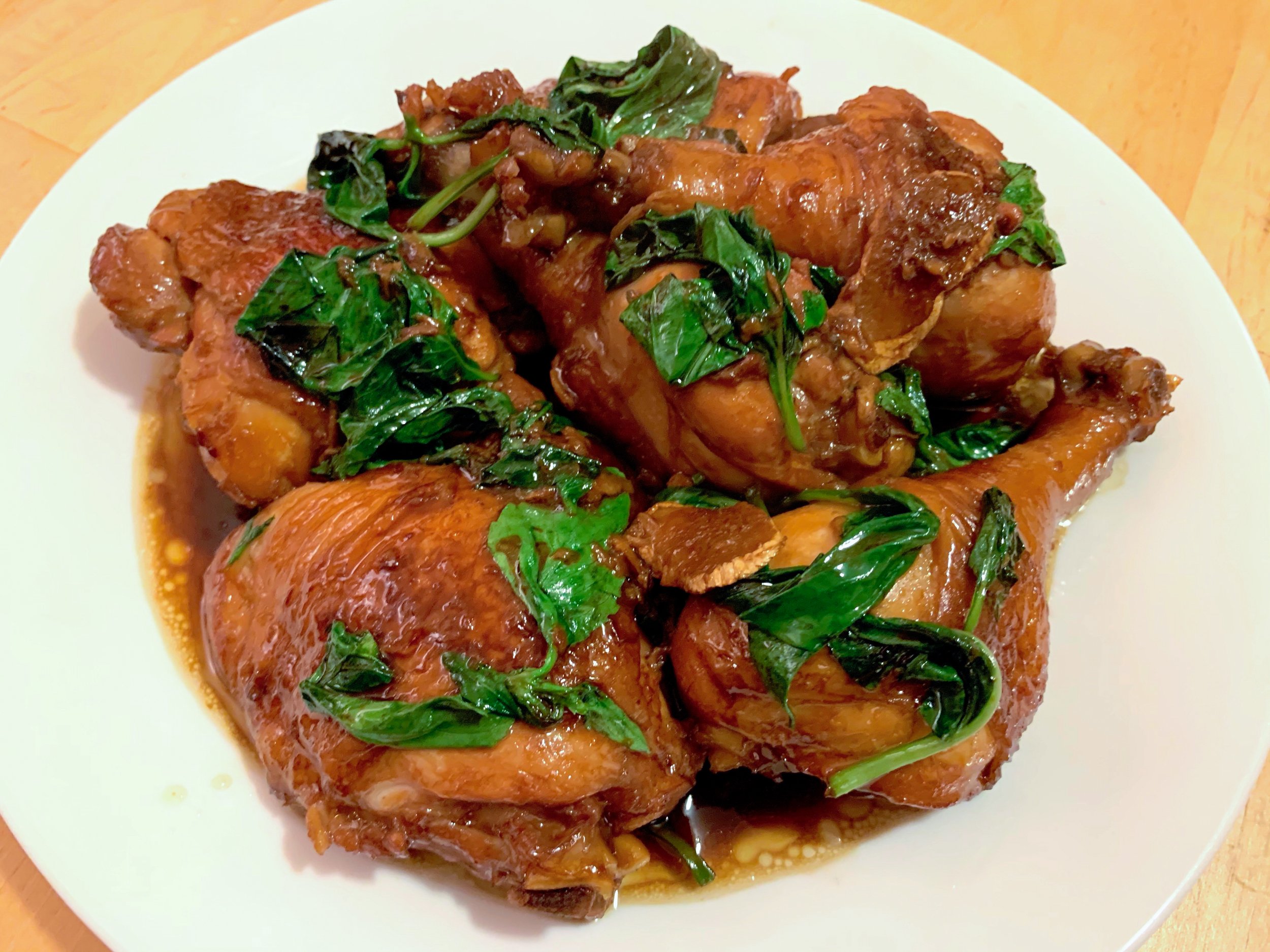Taiwanese Braised Beef

台灣红燒牛肉 (Taiwan Hong Shao Niu Rou)
Taiwanese braised beef is a humble preparation, tough cuts made delicious through a long, slow cook in a richly flavored braising liquid. Beef was not commonly eaten on the island prior to the Japanese invasion of Taiwan in 1895, but the Japanese popularized the consumption of beef during their occupation of the island. After the liberation of the island in 1945 and the arrival of the Nationalist government in 1949, consumption of beef and milk continued to increase, in part due to the island’s close economic ties to the United States. Today, Taiwan has one of the highest per-capita beef consumptions in East Asia, rivaling South Korea and Japan. There are many regional variations of braised beef in Taiwan,[1] and the preparation is the basis for many Taiwanese beef dishes, including beef and tomato stew and the famous Taiwanese beef noodle soup.
Ingredients
2 lb beef stew meat (chuck, round, or shank)
2 inch ginger, sliced
4 cloves garlic
1 scallion, chopped
1 tbsp brown or rock sugar
½ cup soy sauce
½ cup rice wine
3 star anise
10 cloves
1 cinnamon stick
2 bay leaves
1 tbsp fennel seeds
1 tbsp cumin seeds
1 tsp coriander seeds
Vegetable oil
Any stewing cut of beef will work well in this dish. Most commonly beef chuck or beef round are used, though beef shank is also popular. Chop whichever cut you’re using into roughly 2-inch cubes. Place the beef in a large pot of cold water and bring it to a boil. This process, known as blanching, will purge some of the impurities (loose surface proteins) from the meat, giving us a clearer soup. Boil the beef for 1 minute, then drain the beef pieces, rinse them well in running water, and set aside.
In a clean pot, heat 1 tablespoon vegetable oil over high heat. When the oil is hot, add the garlic cloves, ginger slices, and scallion pieces to the pot. Fry for about 30 seconds, stirring occasionally, until the aromatics are fragrant. Then add the beef pieces to the pot and sear them for about 1 min on each side. If your pot is too small to hold the beef pieces in a single layer, work in batches.
While the beef sears, we will prepare our sachet of spices. We will be using a large number of whole spices in this dish: star anise, cinnamon, cloves, bay leaves, fennel seeds, and cumin seeds, coriander seeds. If you do not have all of these spices, you can get away with just the star anise, cinnamon, cloves, and bay leaves.[2] Wrap all of the spices in a piece of cheesecloth, and tie it closed with butcher’s twine to make a spice sachet.
When the beef is done browning, add the sugar, soy sauce, and rice wine to the pot. Stir well, being sure to scrape up any fond which built up on the bottom of the pan during the searing process. Then add enough water to cover the beef, about 4 cups. Add the spice sachet to the pot as well, and bring the pot to a boil.
Simmer the beef for 2 hours over low heat, or until the meat is falling-apart tender. If you are using a pressure cooker, you reduce the cooking time to 60 minutes. When the beef is done cooking, remove the spice sachet and discard it. Remove the beef from the heat. You can serve this dish simply, ladling chunks of beef with plenty of braising liquid over rice or noodles, with some fresh herbs like scallion or cilantro.
You can also use the beef in another recipe. Save the braising liquid! This stuff is now packed with flavor, and most recipes which call for this braised beef will also call for some of this liquid. Refrigerate the liquid, and remove the fat which solidifies on top, if desired.
Substitutions
You can adjust the many whole spices in this recipe to your taste. If you prefer a spicier final product, add some Sichuan peppercorns to the spice sachet, and/or some whole chilies to the braising liquid. Taiwanese people will often add other foods to braise alongside the beef in the same pot, absorbing the rich flavors of the braising liquid. Common “lu cai” (滷菜) include hard-boiled egg, bean curd, tofu, and seaweed.
[1] A version popular in the city of Tainan is perhaps the most minimalist—simply beef, salt, and water. Prepared thusly, the dish relies on very high-quality, locally-sourced meat.
[2] If you don’t want to make your own spice sachet, Asian supermarkets sell prepackaged braising spice sachets which you can use instead. If you can, however, I still recommend using fresh spices and creating your own mix.
Recipe
Prep Time: 10 min Cook Time: 2 hr 10 min Total Time: 2 hr 20 min
Difficulty: 2/5
Heat Sources: 1 burner
Equipment: large pot, cheesecloth, butcher’s twine
Servings: 6
Ingredients
2 lb beef stew meat (chuck, round, or shank)
2 inch ginger, sliced
4 cloves garlic
1 scallion, chopped
1 tbsp brown or rock sugar
½ cup soy sauce
½ cup rice wine
3 star anise
10 cloves
1 cinnamon stick
2 bay leaves
1 tbsp fennel seeds
1 tbsp cumin seeds
1 tsp coriander seeds
Vegetable oil
Instructions
1. Chop the beef into 2-inch pieces. Place them in a pot of cold water and blanch the beef by bringing the pot to a boil and boiling for 1 minute. Drain the beef, rinsing off any impurities.
2. In a clean pot, heat about 1 tbsp vegetable oil. When the oil is hot, add the garlic, ginger slices, and scallion pieces, and fry for about 30 seconds or until fragrant.
3. Add the beef pieces to the pot and sear them for about 1 min on each side, working in batches if necessary.
4. While the beef sears, wrap the star anise, cinnamon, cloves, bay leaves, fennel seeds, cumin seeds, and coriander seeds in a piece of cheesecloth, and tie closed with butcher’s twine to form a spice sachet.
5. Add the soy sauce, rice wine, and sugar to the pot. Stir well, scraping the bottom of the pot to dissolve any fond. Then add the spice sachet to the pot, and add water until the beef is covered, about 4 cups.
6. Turn the heat to low and simmer, covered, for 2 hours. Alternatively, pressure cook for 60 minutes.
7. When the beef is tender, remove the spice sachet and discard it. Remove from the heat and serve with the braising liquid, or use the braised beef in another recipe.















